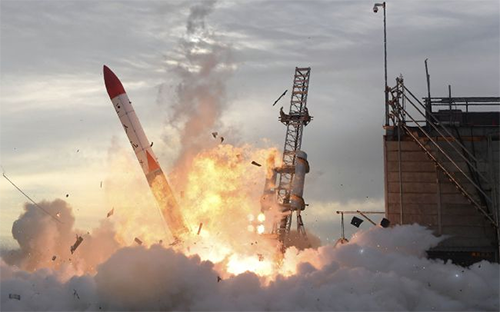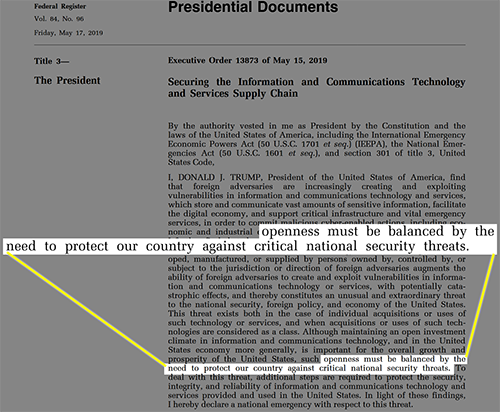| Part of speech: | noun |
|---|---|
| Example sentence: | Ubi libertas cecidit, nemo libere dicere audet. |
| Sentence meaning: | Where freedom has fallen, no one dares to speak freely. |
When I heard that ARM was to stop doing business with Huawei, I was a little bit puzzled as to how that worked: ARM is a British company owned by a Japanese conglomerate; how was the US able to extend its influence beyond its citizens and borders? A BBC report indicated that ARM had concerns over its US origin technologies. I discussed this topic with a friend of mine who works for a different non-US company that has also been asked to comply with the ban. He told me that apparently the US government has been sending cease and desist letters to some foreign companies that derive more than 25% of their revenue from US sources, threatening to hold their market access hostage in order to coerce them from doing business with Huawei.
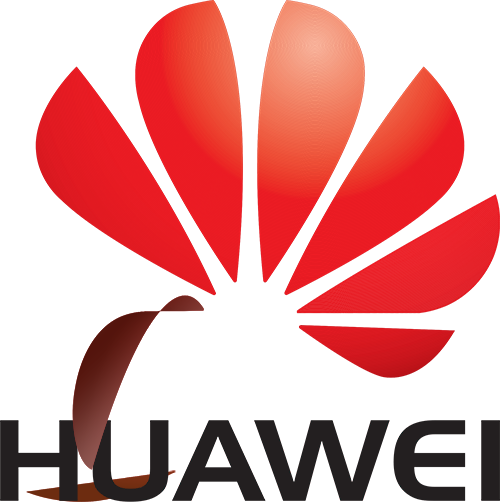
Thus, America has been able to draw a ring around Huawei much larger than its immediate civilian influence; even international suppliers and non-citizens of the US are unable to do business with Huawei. I found the intent, scale, and level of aggression demonstrated by the US in acting against Huawei to be stunning: it’s no longer a skirmish or hard-ball diplomacy. We are in a trade war.
I was originally under the impression that the power to pull this off was a result of Trump’s Executive Order 13873 (EO13873), “Securing the Information and Communications Technology and Services Supply Chain”. I was wrong. Amazingly, this was nothing more than a simple administrative ruling by the Bureau of Industry and Security through powers granted via the “EAR” (Export Administration Regulation 15 CFR, subchapter C, parts 730-774), along with a sometimes surprisingly broad definition of what qualifies as export-controlled US technology. The administrative ruling cites Huawei’s indictment for willfully selling equipment to Iran as justification for commuting a broad technology export ban upon Huawei’s global operations.
Going Nuclear: Executive Order 13873
If a simple administrative ruling can inflict such widespread damage, what sorts of consequences does EO13873 hold? I decided to look up the text and read it.
EO13873 states there is a “national emergency” because “foreign adversaries” pose an “unusual and extraordinary threat to national security” because they are “increasingly creating and exploiting vulnerabilities in information and communications technology services”. Significantly, infocomm technology is broadly defined to include hardware and software, as well as on-line services.
It’s up to the whims of the administration to figure out who or what meets that criteria for a “foreign adversary”. While no entities have yet been designated as a foreign adversary, it is broadly expected that Huawei will be on that list.
According to the text of EO13873, being named a foreign adversary means one has engaged in a long-term pattern or serious instances of conduct significantly adverse to the national security of the US. In the case of Huawei, there has been remarkably little hard evidence of this. The published claims of backdoors or violations found in Huawei equipment are pretty run-of-the-mill; they could be just diagnostic or administrative tools that were mistakenly left into a production build. If this is the standard of evidence required to designate a foreign adversary, then most equipment vendors are guilty and at risk of being designated an adversary. For example, glaring flaws in Samsung SmartTVs enabled the CIA’s WeepingAngel malware to listen in on your conversations, yet Samsung is probably safe from this list.
If Huawei has truly engaged in a long-term pattern of conduct significantly adverse to national security, surely, some independent security research would have already found and published a paper on this. Given the level of fame and notoriety such a researcher would gain for finding the “smoking gun”, I can’t imagine the relative lack of high-profile disclosures is for a lack of effort or motivation. Hundreds of CVEs (Common Vulnerabilities and Exposures) have been filed against Huawei, yet none have been cited as national security threats. Meanwhile, even the NSA agrees that the Intel Management Engine is a threat, and has requested a special setting in Intel CPUs to disable it for their own secure computing platforms.
If Huawei were to be added to this list, it would set a significantly lower bar for evidence compared to the actions against similarly classified adversaries such as Iran or North Korea. Lowering the bar means other countries can justify taking equivalent action against the US or its allies with similarly scant evidence. This greatly amplifies the risk of this trade war spiraling even further out of control.
Supply Chains are an Effective but Indiscriminate Weapon
How big a deal is this compared to say, a military action where bombs are being dropped on real property? Here’s some comparisons I dug up to get a sense of scale for what’s going on. Huawei did $105 billion revenue in 2018 – 30% more than Intel, and comparable to the GDP of Ukraine – so Huawei is an economically significant target.
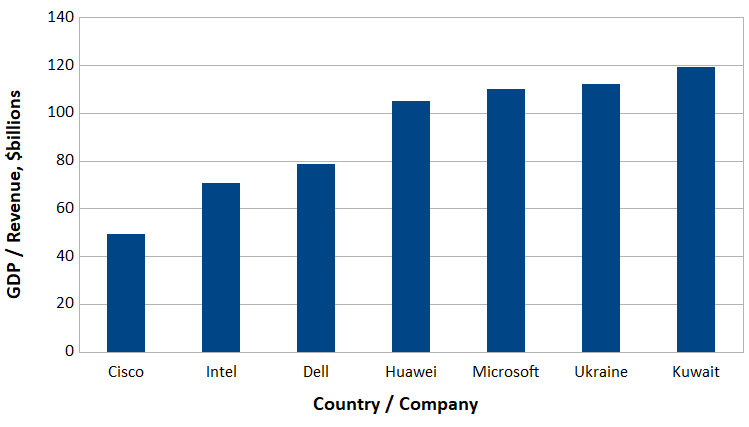
Above: Huawei 2018 revenue in comparison to other companies or country’s GDP.
Now, let’s compare this to the potential economic damage of a bomb being dropped on a factory: let’s say an oil refinery. One report indicated that the largest oil refinery explosion since 1974 caused around $1.8 billion in economic damage. So carving Huawei out of the global supply chain with an army of bureaucrats is better bang for the buck than sending in an actual army with guns, if the goal is to inflict economic damage.
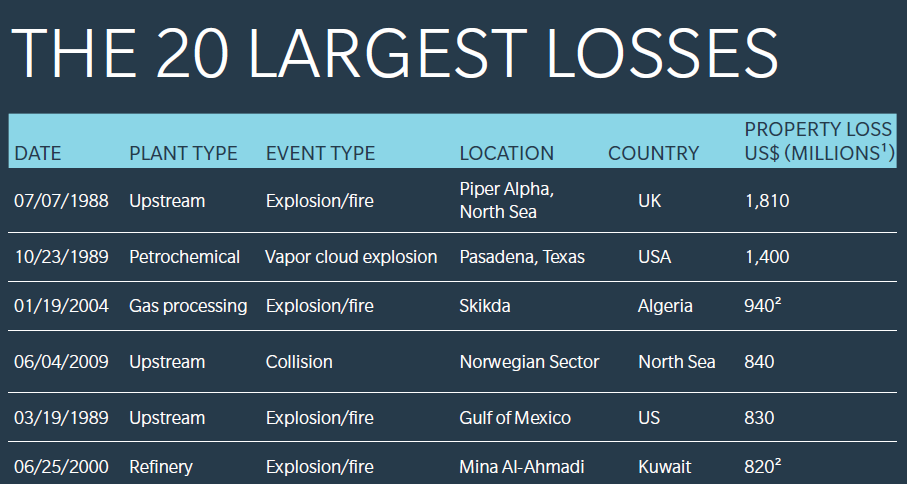
Above: A section of “The 100 Largest Losses, 1974-2013: Large Property Damage Losses in the Hydrocarbon Industry, 23rd Edition”.
The problem is, unlike previous wars fought in distant territories, the splash damage of a trade war is not limited to a geographic region. The abrupt loss of Huawei as a customer will represent billions of dollars in losses for a large number of US component suppliers, resulting in collateral damage to US citizens and companies. Even though only a couple weeks have passed, I have first-hand awareness of one US-based supplier of components to Huawei who has gone from talks about acquisition/IPO to talks about bankruptcy and laying off hundreds of well-paid American staff; doubtless there will be more stories like this.
Reality Check: Supply Chains are Not Guided Missiles
The EAR was implemented 40 years ago, during the previous Cold War, as part of an effort to weaponize the US dollar. The US dollar’s power comes in part from the fact that most crude oil is traded for US dollars – countries like Saudi Arabia won’t accept any other currency in payment for its oil. Therefore sanctioned countries must acquire US dollars on the black market at highly unfavorable rates, resulting in a heavy economic toll on the sanctioned country. However, it’s worth taking a moment to note some very important differences between previous sanctions which used the US dollar as a weapon, and the notional use of the electronics supply chain as a weapon.
The most significant difference is that the US truly has an axiomatic monopoly on the supply of US dollars. Nobody can make a genuine US dollar, aside from the US – by definition. However, there is no such essential link between a geopolitical region and technology. Currently, US brands sell some of the best and most competitively priced technology, but also little of it is manufactured within the US. US may have one of the largest markets, but it does not own the supply chain.
It’s no secret that the US has outsourced most of its electronics supply chain overseas. From the fabrication of silicon chips, to the injection molding of plastic cases, to the assembly of smartphones, it happens overseas, with several essential links going through or influenced by China. Thus weaponizing the electronics supply chain is akin to fighting a war where bullets and breeches are sourced from your enemy. Victory is not inconceivable in such a situation, but it requires planning and precision to ensure that the first territory captured in the war hosts the factories that supply your base of power.
Using the global supply chain as a weapon is like launching a missile where your enemy controls the guidance systems: you can point it in the right direction, but where it goes after launch is out of your hands. Some of the first casualties of this trade war will be the American businesses that traded with Huawei. And if China chooses to reciprocate and limit US access to its supply chain, the US could take a hard hit.
Unintended Consequences: How Weaponized Trade Could Backfire And Weaken US Tech Leadership
One of the assumed outcomes of the trade war will be a dulling of China’s technical prowess, now that its access to the best and highest performing technology has been cut off. However, unlike oil or US dollars, US dominance in technology is not inherently linked to geographic territories. Instead, the reason why the US has maintained such a dominant position for such a long time is because of a free and unfettered global market for technology.
Technology is a constant question of “make vs. buy”: do we invest to build our own CPU, or just buy one from Intel or ARM? Large customers routinely consider the option of building their own royalty-free in-house solutions. In response to such threats, US-based providers lower their prices or improve their offerings, thus swinging the position of their customers from “make” to “buy”.
Thus, large players are rarely without options when their technology suppliers fail to cooperate. Huge companies routinely groom internal projects to create credible hedge positions that reduce market prices for acquiring various technologies. It just so happens the free market has been very effective at dissuading the likes of Huawei from investing the last hundred million dollars to bring those internal projects to market: the same market forces that drove the likes of the DEC Alpha and Sun Sparc CPUs to extinction have also kept Huawei’s CPU development ambitions at bay.
The erection of trade barriers disrupts the free market. Now, US companies will no longer feel the competitive pressure of Huawei, causing domestic prices to go up while reducing the urgency to innovate. In the meantime, Huawei will have no choice but to invest that last hundred million dollars to bring a solution to market. This in no way guarantees that Huawei’s ultimate solution will be better than anything the US has to offer, but one would be unwise to immediately dismiss the possibility of an outcome where Huawei, motivated by nationalism and financially backed by the Chinese government, might make a good hard swing at the fences and hit a home run.
The interest in investing in alternative technologies goes beyond Huawei. Before the trade war, hardly anyone in the Chinese government had heard about RISC-V, an open-source alternative to Intel and ARM CPUs. Now, my sources inform me it is a hot topic. While RISC-V lags behind ARM and Intel in terms of performance and maturity, one key thing it had been lacking is a major player to invest the money and manpower it takes to close the gap. The deep irony is that the US-based startup attempting to commercialize RISC-V – SiFive – will face strong headwinds trying to tap the sudden interest of Chinese partners like Huawei directly, given the politics of the situation.
Collateral Damage: Open Source
The trade war also begs a question about the fate of open source as a whole. For example, according to the 2017 Linux Foundation report, Huawei was a Platinum sponsor of the Linux Foundation – contributing $500,000 to the organization – and they were responsible for 1.5% of the code in the Linux kernel. This is more influence than Facebook, more than Texas Instruments, more than Broadcomm.
Because the administrative action so far against Huawei relies only upon export license restrictions, the Linux Foundation has been able to find shelter under a license exemption for open source software. However, should Huawei be designated as a “foreign adversary” under EO13873, it greatly expands the scope of the ban because it prohibits transactions with entities under the direction or influence of foreign adversaries. The executive order also broadly includes any information technology including hardware and software with no exemption for open source. In fact, it explicitly states that “…openness must be balanced by the need to protect our country against critical national security threats”. While the context of “open” in this case refers to an “investment climate”, I worry the text is broad enough to easily extend its reach into open source technologies.
There’s nothing in Github (or any other source-sharing platform) that prevents your code from being accessed by a foreign adversary and incorporated into their technological base, so there is an argument that open source developers are aiding and abetting an enemy by effectively sharing technology with them. Furthermore, in addition to considering requests to merge code from a technical standpoint, one has to also consider the possibility that the requester could be subject to the influence of Huawei, in which case accepting the merge may put you at risk of stiff penalties under the IEEPA (up to $250K for accidental violations; $1M and 20 years imprisonment for willful violations).
Hopefully there are bright and creative lawyers working on defenses to the potential issues raised by EO13873.
But I will say that ideologically, a core tenant of open source is non-discriminatory empowerment. When I was introduced to open source in the 90’s, the chief “bad guy” was Microsoft – people wanted to defend against “embrace, extend, extinguish” corporate practices, and by homesteading on the technological frontier with GNU/Linux we were ensuring that our livelihoods, independence, and security would never be beholden to a hostile corporate power.
Now, the world has changed. Our open source code may end up being labeled as enabling a “foreign adversary”. I never suspected that I could end up on the “wrong side” of politics by being a staunch advocate of open source, but here I am. My open source mission is to empower people to be technologically independent; to know that technology is not magic, so that nobody will ever be a slave to technology. This is true even if that means resisting my own government. The erosion of freedom starts with restricting access to “foreign adversaries”, and ends with the government arbitrarily picking politically convenient winners and losers to participate in the open source ecosystem.
Freedom means freedom, and I will stand to defend it.
Now that the US is carpet-bombing Huawei’s supply chain, I fear there is no turning back. The language already written into EO13873 sets the stage to threaten open source as a whole by drawing geopolitical and national security borders over otherwise non-discriminatory development efforts. While I still hold hope that the trade war could de-escalate, the proliferation and stockpiling of powerful anti-trade weapons like EO13873 is worrisome. Now is the time to raise awareness of the threat this poses to the open source world, so that we can prepare and come together to protect the freedoms we cherish the most.
I hope, in all earnestness, that open source shall not be a casualty of this trade war.
Now, the world has changed. Our open source code may end up being labeled as enabling a “foreign adversary”. I never suspected that I could end up on the “wrong side” of politics by being a staunch advocate of open source, but here I am. My open source mission is to empower people to be technologically independent; to know that technology is not magic, so that nobody will ever be a slave to technology. This is true even if that means resisting my own government. The erosion of freedom starts with restricting access to “foreign adversaries”, and ends with the government arbitrarily picking politically convenient winners and losers to participate in the open source ecosystem."

Enlarge / Forecast output from the new version of the model, which goes into service today. (credit: NOAA)
Weather forecasters need a ton of knowledge and a fair bit of experience with local weather patterns to do their job well. They also need a good forecast model. These computer models take in measurements from weather stations on the ground, satellites in orbit, and balloons in between and then simulate the physics of weather forward in time a few days.
For the first time in about 40 years, the guts of the US model got swapped out for something new today. The upgrade brings us a new “Finite-Volume Cubed-Sphere” (or FV3) dynamical core, which simulates the basic atmospheric physics at the heart of this endeavor, a change that has been in the works for a while.
The new core had its origins in simulating atmospheric chemistry but ended up being adapted into other models. A few years ago, it was selected to replace the old core in the US Global Forecast System model. And for more than a year now, the new version of the model has been running in parallel so its results could be compared to the operational model.
That evaluation also included retroactive forecasts (that is, forecast simulations with the same inputs that were available on each day in the past) of the past three years, with an additional focus on case studies of major hurricanes and common storm types.
The results have been a little mixed. The new core improves computational efficiency and allows some processes to be simulated at a higher resolution—unequivocal improvements. It also simulates the physics of water vapor more realistically. In a press conference today, NOAA scientists cited a number of areas where forecast improvements have been seen. Forecast tracks of hurricanes and the mid-latitude storms that frequently sweep across the US have both improved, they said, along with forecasts of hurricane strength. Forecast precipitation amounts were also cited as a key area of progress.

Two examples of case studies that showed big improvements in the new (FV3) version of the model. (credit: NOAA)
But there have also been grumblings in the weather community over the past year about results that didn’t seem so hot. For example, surface temperatures have been biased low in some situations, throwing off forecasts.
Of course, no model is a perfect replica of the planet, and part of using these models to forecast weather requires us to understand and account for their biases. NOAA says that the cold bias has been reduced by development over the past few months—and development is a continuous process that doesn’t stop when a model goes live. Still, there could be an adjustment period here as forecasters get used to their new souped-up model. At least through September of this year, the old model will still be running in parallel to aid in that transition.
Improvements to the forecast system can come from other fronts, too, from recent upgrades to NOAA’s supercomputers that drive the models to launches of the latest and greatest satellites. But switching out the core of the main forecast model is a big deal that will hopefully help it keep up with the progress being made by others. Right now, the European Centre for Medium-Range Weather Forecasts model is generally seen as the top dog.
 Milky Way over Pyramid of the Feathered Serpent
To see the feathered serpent
descend
the Mayan pyramid requires exquisite timing.
You must visit
El Castillo -- in
Mexico's
Yucatán Peninsula -- near an
equinox.
Then, during the late afternoon if the sky is clear,
the pyramid's own
shadows create triangles
that merge into the famous illusion of the
slithering viper.
Also known as the
Temple of Kukulkan, the impressive step-pyramid stands 30 meters tall and 55 meters wide at the base.
Built up as a series of square terraces by the
pre-Columbian civilization between the 9th and 12th century,
the structure can be used as a calendar and is noted for
astronomical alignments.
To see the central band of our
Milky Way Galaxy descend overhead the
Mayan pyramid,
however, requires less exquisite timing.
Even the
ancient Mayans
might have been impressed, though, to know that the exact positions of the Milky Way, Saturn (left) and Jupiter (right) in the featured image give it a time stamp more specific than
equinox -- in fact 2019 April 7 at 5 am.
Milky Way over Pyramid of the Feathered Serpent
To see the feathered serpent
descend
the Mayan pyramid requires exquisite timing.
You must visit
El Castillo -- in
Mexico's
Yucatán Peninsula -- near an
equinox.
Then, during the late afternoon if the sky is clear,
the pyramid's own
shadows create triangles
that merge into the famous illusion of the
slithering viper.
Also known as the
Temple of Kukulkan, the impressive step-pyramid stands 30 meters tall and 55 meters wide at the base.
Built up as a series of square terraces by the
pre-Columbian civilization between the 9th and 12th century,
the structure can be used as a calendar and is noted for
astronomical alignments.
To see the central band of our
Milky Way Galaxy descend overhead the
Mayan pyramid,
however, requires less exquisite timing.
Even the
ancient Mayans
might have been impressed, though, to know that the exact positions of the Milky Way, Saturn (left) and Jupiter (right) in the featured image give it a time stamp more specific than
equinox -- in fact 2019 April 7 at 5 am.

